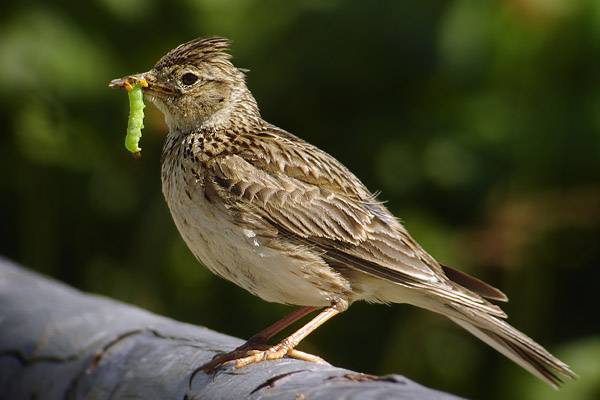Alauda arvensis
Intensive agriculture is widely recognised as a major cause of declining farmland bird populations. New research has identified which aspects of agricultural intensification are most damaging to farmland bird numbers, examining bird populations at seven farmland sites across Europe. The researchers found that simplified landscapes created by intensive agriculture reduced bird numbers at the sites.
Many bird species rely on farmland, which occupies 43% of land in the EU. As a result, any changes to agricultural practices could have serious implications for bird populations. For instance, recent significant falls in farmland bird numbers have been linked to agricultural intensification, which has affected vital foraging and breeding habitats on farms. However, few studies have examined the precise elements of intensification that have affected bird populations.
To address this, the researchers examined the effects of several landscape and field-level factors on bird populations at seven sites in six European countries (Estonia, Germany, the Netherlands, Poland, Spain and Sweden). They carried out bird surveys at 30 cereal farms in each area in spring and summer 2007, and collected farm data through questionnaires.
They found a total of 30 bird species on the farms, 19 of which were breeding in the chosen fields. Skylark was the most common species, which was twice as abundant as the second most common species, the Yellow Wagtail. Looking at the causes of variation in bird populations between the different farms, they showed that landscape-related factors accounted for 14% of the variation in farmland bird populations and 20% of the variation in breeding pair density. Field management factors accounted for just 3% of individual variation and 13% of the variation in breeding pair density.
When they looked at the specific landscape and field-level factors, they found that the simplification of the landscape under agricultural intensification to include fewer crop varieties and larger fields was having a negative effect on bird numbers, particularly breeding pairs. The researchers suggest this could be due to a reduction in field margins, which provide food, nesting sites and cover, and more intense management practices in larger fields.
The results could help conservationists and farmers with better management of the impacts of agriculture on vulnerable farmland bird populations. In particular, the researchers suggest the findings could help target agri-environment schemes and similar policies more effectively, and support efforts for less intensive farming methods, such as lower inputs and reduced soil mechanical disrupting, designed to reverse farmland bird declines by ensuring suitable nesting habitats.
Source: Guerrero, I., Morales, M.B., Onate, J.J., et al (2012). Response of ground-nesting farmland birds to agricultural intensification across Europe: Landscape and field level management factors. Biological Conservation. 152: 74-80. http://dx.doi.org/10.1016/j.

0 comentarios realizados :
Publicar un comentario